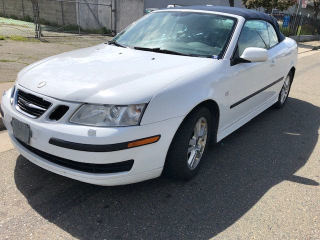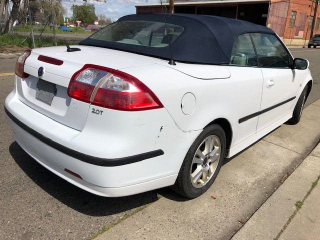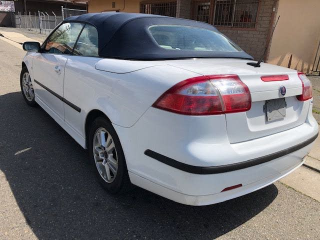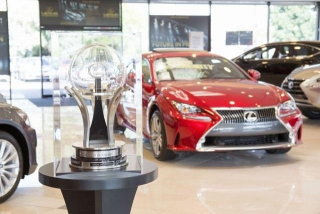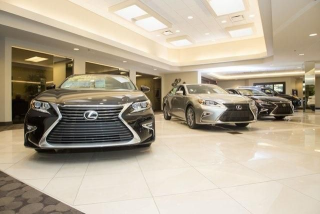The 2007 Saab 9-3, part of the second-generation (2003-2011) and under GM ownership, offered distinctive Swedish luxury. Available as a Sedan, SportCombi (wagon), and Convertible, its key trims included the 2.0T and the more powerful Aero. New pricing ranged from approximately $27,000 to over $40,000. It stood out for its unique aviation-inspired design, standard turbocharged engines, engaging driving dynamics, and unwavering commitment to safety, attracting those who desired something different from mainstream luxury.
The Good
The 2007 Saab 9-3 boasts distinctive, understated design and engaging turbocharged performance, appealing to emotional buyers. Practical advantages include strong safety ratings, comfortable and ergonomic interiors, and decent fuel efficiency for its class. As a used car, it offers excellent value for a unique European luxury experience.
The Bad
Watch out for common issues like failing Saab Information Display (SID) pixels, ignition coil problems on the 2.0T, and potential timing chain concerns on the 2.8L V6. Electrical gremlins and suspension component wear are also known weaknesses, often leading to higher repair costs due to specialized parts.
2007 Saab 9-3: Quick Overview
- Engine Options:
- 2.0T: 2.0L turbocharged inline-4 (B207R)
- Aero: 2.8L turbocharged V6 (LP9/B284R)
- Horsepower:
- 2.0T: 210 hp
- Aero: 250 hp (early 2007 models), 255 hp (late 2007 models)
- Fuel Economy (EPA est. MPG):
- 2.0T Manual: 20 city / 30 highway
- 2.0T Automatic: 19 city / 29 highway
- Aero Manual: 18 city / 27 highway
- Aero Automatic: 17 city / 26 highway
- 0-60 mph (approximate):
- 2.0T: 6.9-7.5 seconds
- Aero: 6.0-6.4 seconds
- Towing Capacity: Generally not officially rated for significant towing in North America. Light towing (under 1,000 lbs) for small utility trailers may be possible if equipped, but is not recommended as a primary tow vehicle.
- Trim-Level Features (Key Highlights):
- 2.0T (Base/Linear equivalent): Standard features include automatic climate control, power windows/locks/mirrors, CD player with auxiliary input, tilt/telescoping steering wheel, 16-inch alloy wheels, and front-wheel drive. Options included leather upholstery, a sunroof, premium audio, and navigation.
- Aero: Builds significantly on the 2.0T with the more powerful 2.8L V6 engine, sport-tuned suspension, larger brakes, 17-inch or 18-inch alloy wheels, a unique aerodynamic body kit, sport seats (often leather), dual exhaust outlets, and upgraded interior trim. Xenon headlights were frequently standard or a common option.
- Convertible: Available in both 2.0T and Aero configurations, featuring a power-folding soft top, a reinforced chassis for structural rigidity, and distinctive convertible-specific styling elements.
- All 9-3 models featured Saab's distinctive "Night Panel" function to dim dashboard lights for reduced night-time distraction, and a centrally located ignition key. Standard safety across the range included ABS, traction control, stability control, and a comprehensive airbag system.
2007 Saab 9-3 Specifications
Vehicle Information
| Year | 2007 |
| Make | Saab |
| Model | 9-3 |
| Trim | - |
| Style | 2.0-T |
| Type | Wagon |
| Category | Small Station Wagon |
Manufacturing Details
| Made In | Sweden |
| Manufacturing City | GRAZ |
Dimensions
| Doors | 4-Door |
| Curb Weight | 3690 pounds |
| Gross Vehicle Weight Rating | 4380 pounds |
| Overall Height | 60.60 inches |
| Overall Length | 183.20 inches |
| Overall Width | 69.40 inches |
| Wheelbase Length | 105.30 inches |
| Standard Seating | 5 |
Engine & Performance
| Engine | 2.0-L L-4 DOHC 16V Turbo |
| Engine Size | 2L |
| Engine Cylinders | 4 |
| Transmission | 5-Speed Manual |
| Transmission Type | Manual |
| Transmission Speeds | 5-Speed |
| Drivetrain | Front-Wheel Drive |
Additional Features
| Anti-Brake System | 4-Wheel ABS |
| Steering Type | Rack & Pinion |
Pricing
| Manufacturer Suggested Retail Price (MSRP) | $27,495 |
| Invoice Price | $26,076 |
| Delivery Charges | $745 |
Vehicle History Report
Vehicle
Specifications
Specifications
Ownership
History
History
All History
Events
Events
NMVTIS Title
History Check
History Check
Salvage/Rebuilt
Check
Check
Accident
Check
Check
Theft
Check
Check
Open Lien
Check
Check
Past Sale
Listings
Listings
Safety
Recalls
Recalls
Odometer
Check
Check
Market Price
Analysis
Analysis
What Problems Does the 2007 Saab 9-3 Have?
The 2007 Saab 9-3, while generally a robust car, has several frequently reported problems and long-term reliability concerns. A very common cosmetic and functional issue is the failure of pixels on the Saab Information Display (SID), making it difficult to read information. Electrically, owners often report ignition coil failures on the 2.0T engine, leading to misfires and rough idling. Other general electrical gremlins can manifest as intermittent power window operation, central locking issues, or various sensor failures triggering "Check Engine" lights.
Suspension components are also known wear items; specifically, front control arm bushings, strut mounts, and sway bar links tend to degrade, resulting in clunking noises or a loose steering feel. The turbocharger, while generally reliable if maintained, can fail prematurely without proper oil changes and cool-down procedures.
For models equipped with the 2.8L V6 engine (Aero), there are documented concerns about timing chain stretching or tensioner issues. This is a significant and costly repair. Water pump failures on V6 models are also not uncommon. Another common coolant-related issue involves the plastic heater bypass valve becoming brittle and cracking, leading to coolant leaks and potential overheating.
Regarding recalls, the 2007 model year notably had a recall for a potential fuel pump power module overheating issue, which could cause a loss of fuel supply and engine stalling. It's always recommended to check the specific VIN for any outstanding recalls. Long-term reliability is largely dependent on meticulous maintenance. While the mechanical foundations are strong, the increasing scarcity of Saab-specific parts and the need for specialist knowledge can make certain repairs expensive and challenging, contributing to higher long-term ownership costs compared to more mainstream brands.
Suspension components are also known wear items; specifically, front control arm bushings, strut mounts, and sway bar links tend to degrade, resulting in clunking noises or a loose steering feel. The turbocharger, while generally reliable if maintained, can fail prematurely without proper oil changes and cool-down procedures.
For models equipped with the 2.8L V6 engine (Aero), there are documented concerns about timing chain stretching or tensioner issues. This is a significant and costly repair. Water pump failures on V6 models are also not uncommon. Another common coolant-related issue involves the plastic heater bypass valve becoming brittle and cracking, leading to coolant leaks and potential overheating.
Regarding recalls, the 2007 model year notably had a recall for a potential fuel pump power module overheating issue, which could cause a loss of fuel supply and engine stalling. It's always recommended to check the specific VIN for any outstanding recalls. Long-term reliability is largely dependent on meticulous maintenance. While the mechanical foundations are strong, the increasing scarcity of Saab-specific parts and the need for specialist knowledge can make certain repairs expensive and challenging, contributing to higher long-term ownership costs compared to more mainstream brands.
How long will the 2007 Saab 9-3 last?
With consistent and diligent maintenance, including proper oil changes with synthetic oil, a 2007 Saab 9-3 can reliably serve its owners for 150,000 to 200,000 miles or more, often exceeding 15 years of service. Many enthusiasts report their Saabs reaching even higher mileages. The core engines and transmissions are generally quite durable. However, long-term durability is highly contingent on the care it received from previous owners. Over time, weaknesses tend to emerge in the electronics, such as the inevitable pixelation of the SID and various sensor failures. Suspension components will require replacement, and unique Saab-specific parts can become more expensive and challenging to source, making proactive maintenance critical to ensuring a long lifespan and mitigating escalating repair costs as the vehicle ages.
What Technology & Safety Features are Included?
The 2007 Saab 9-3 incorporated a blend of functional technology, strong entertainment options for its era, and comprehensive safety features.
Built-in Tech & Entertainment: Standard features included an AM/FM stereo with a CD player, and importantly for 2007, an auxiliary input jack for portable music devices. An optional premium Harman Kardon 11-speaker sound system significantly upgraded the audio experience, often paired with a 6-disc in-dash CD changer. An integrated navigation system with a unique pop-up screen was also an available option. Saab's signature "Night Panel" function, allowing drivers to dim most dashboard lights for reduced distraction during night driving, highlighted its aviation-inspired design ethos. Bluetooth connectivity for hands-free phone calls was also typically offered as an option.
Driver-Assistance Features: Driver-assistance technology was fairly basic, aligning with the standards of 2007. These primarily included Anti-lock Brakes (ABS), Traction Control System (TCS), and Saab's Electronic Stability Program (ESP). Cruise control was standard, and rear parking sensors were an available factory option to aid in maneuvering.
Safety Features: Saab had an industry-leading reputation for safety. The 2007 9-3 came standard with a robust suite of passive safety features: dual-stage front airbags, side-impact airbags for front occupants (thorax/pelvis protection), and full-length side curtain airbags providing head protection for both front and rear occupants in side-impact collisions. Active head restraints in the front seats were designed to reduce whiplash injuries, and the vehicle featured Saab's "SafeSeat" design with ISOFIX/LATCH child seat anchors.
Crash-Test Ratings: The 2007 Saab 9-3 performed exceptionally well in crash tests:
Built-in Tech & Entertainment: Standard features included an AM/FM stereo with a CD player, and importantly for 2007, an auxiliary input jack for portable music devices. An optional premium Harman Kardon 11-speaker sound system significantly upgraded the audio experience, often paired with a 6-disc in-dash CD changer. An integrated navigation system with a unique pop-up screen was also an available option. Saab's signature "Night Panel" function, allowing drivers to dim most dashboard lights for reduced distraction during night driving, highlighted its aviation-inspired design ethos. Bluetooth connectivity for hands-free phone calls was also typically offered as an option.
Driver-Assistance Features: Driver-assistance technology was fairly basic, aligning with the standards of 2007. These primarily included Anti-lock Brakes (ABS), Traction Control System (TCS), and Saab's Electronic Stability Program (ESP). Cruise control was standard, and rear parking sensors were an available factory option to aid in maneuvering.
Safety Features: Saab had an industry-leading reputation for safety. The 2007 9-3 came standard with a robust suite of passive safety features: dual-stage front airbags, side-impact airbags for front occupants (thorax/pelvis protection), and full-length side curtain airbags providing head protection for both front and rear occupants in side-impact collisions. Active head restraints in the front seats were designed to reduce whiplash injuries, and the vehicle featured Saab's "SafeSeat" design with ISOFIX/LATCH child seat anchors.
Crash-Test Ratings: The 2007 Saab 9-3 performed exceptionally well in crash tests:
- NHTSA (National Highway Traffic Safety Administration):
- Frontal Crash: 5 Stars (Driver), 5 Stars (Passenger)
- Side Crash: 5 Stars (Front Seat), 5 Stars (Rear Seat)
- Rollover: 4 Stars
- IIHS (Insurance Institute for Highway Safety):
- Moderate Overlap Front: "Good"
- Side Impact: "Good"
- Rear Crash Protection/Head Restraints: "Good"
What Colors Options are Available?
2007 Saab 9-3 Prices and Market Value
When new in 2007, the Saab 9-3 ranged from approximately $27,000 for a base 2.0T Sedan to well over $40,000 for a fully optioned Aero Convertible. Today, current used market prices vary significantly based on condition, mileage, and trim, typically falling between $3,000 and $8,000+. Aero models, Convertibles, and SportCombi wagons generally command higher prices, especially pristine examples.
Depreciation was initially steep, characteristic of European luxury cars, but accelerated dramatically after Saab's bankruptcy, resulting in today's low used prices. Factors affecting resale value now include its status as an "orphan brand" (raising concerns about parts and specialized service) and the vehicle's age. However, for enthusiasts, exceptional, low-mileage examples, particularly rare body styles like the SportCombi, might see some niche appreciation as they become modern classics.
Depreciation was initially steep, characteristic of European luxury cars, but accelerated dramatically after Saab's bankruptcy, resulting in today's low used prices. Factors affecting resale value now include its status as an "orphan brand" (raising concerns about parts and specialized service) and the vehicle's age. However, for enthusiasts, exceptional, low-mileage examples, particularly rare body styles like the SportCombi, might see some niche appreciation as they become modern classics.
2007 Saab 9-3 Cost of Ownership
The 2007 Saab 9-3 can be moderately costly to own. Insurance premiums are generally comparable to other entry-level luxury sedans, though perhaps slightly higher due to its niche status. Fuel costs are reasonable, as the turbocharged engines require premium unleaded but offer decent efficiency. However, maintenance and repair are where costs can rise. Saab-specific parts can be expensive and sometimes harder to source, often requiring specialist mechanics. Common issues like SID pixel failure, ignition coils, or timing chain repairs (on V6) can be significant expenses. Long-term ownership is less economical than a typical mainstream car, making it more suited for enthusiasts willing to invest in its unique character.
2007 Saab 9-3 Fuel Efficiency
Fuel Type
Gasoline
Fuel Capacity
16.40 gallons
City Mileage
20 miles/gallon
Highway Mileage
30 miles/gallon
2007 Saab 9-3 Safety Rating
NHTSA
IIHS
2007 Saab 9-3 Warranty
Basic
Original warranty
48 months / 50,000 miles
Estimated remaining
Expired
Powertrain
Original warranty
60 months / 100,000 miles
Estimated remaining
Expired
Rust
Original warranty
120 months / unlimited miles
Estimated remaining
Expired
2007 Saab 9-3 Insurance
Insurance for a 2007 Saab 9-3 is moderately priced, reflecting its status as a Wagon with strong safety ratings and
reasonable repair costs.
reasonable repair costs.
How Does the 2007 Saab 9-3 Compare to Other Wagon?
The 2007 Saab 9-3 competed against established rivals like the BMW 3-Series (E90), Audi A4 (B7), Mercedes-Benz C-Class (W203), and also cross-shopped with the Volvo S40/V50 and premium Japanese sedans such as the Acura TSX and Infiniti G35.
Performance: The 9-3 2.0T offered competitive turbocharged four-cylinder performance against its German and Japanese counterparts, often feeling more spirited than the base naturally aspirated engines in some rivals. The Aero V6, with 250-255 hp, delivered strong acceleration that could challenge even higher-tier engines from BMW and Audi, though it might not match the ultimate handling precision of a 3-Series. Compared to the Volvo S40, the Saab generally offered a more engaging drive.
Features: The Saab provided a good array of standard features, notably its comprehensive safety package and unique "Night Panel" function. Its interior design was distinctive and driver-focused. However, its infotainment system, while functional and updated for 2007 with an AUX input, often lagged behind the more sophisticated (though sometimes equally quirky) systems found in German rivals.
Reliability: This is a mixed area for the 9-3. While the core engines are largely robust, specific electronic components (like the SID) and certain mechanical parts (ignition coils, V6 timing chains) have known weaknesses that can lead to costly repairs. German rivals also have their reliability challenges, but parts and specialized repair services are more widely available. Japanese alternatives like the Acura TSX and Infiniti G35 generally boasted superior long-term reliability records.
Price: When new, the 9-3 was typically positioned as a "value luxury" option, priced below comparable German models. On the used market, this difference is even more pronounced; a 2007 9-3 is significantly more affordable than a same-year 3-Series or A4, making it a compelling bargain for those seeking European flair on a budget.
Recommended Alternatives:
Performance: The 9-3 2.0T offered competitive turbocharged four-cylinder performance against its German and Japanese counterparts, often feeling more spirited than the base naturally aspirated engines in some rivals. The Aero V6, with 250-255 hp, delivered strong acceleration that could challenge even higher-tier engines from BMW and Audi, though it might not match the ultimate handling precision of a 3-Series. Compared to the Volvo S40, the Saab generally offered a more engaging drive.
Features: The Saab provided a good array of standard features, notably its comprehensive safety package and unique "Night Panel" function. Its interior design was distinctive and driver-focused. However, its infotainment system, while functional and updated for 2007 with an AUX input, often lagged behind the more sophisticated (though sometimes equally quirky) systems found in German rivals.
Reliability: This is a mixed area for the 9-3. While the core engines are largely robust, specific electronic components (like the SID) and certain mechanical parts (ignition coils, V6 timing chains) have known weaknesses that can lead to costly repairs. German rivals also have their reliability challenges, but parts and specialized repair services are more widely available. Japanese alternatives like the Acura TSX and Infiniti G35 generally boasted superior long-term reliability records.
Price: When new, the 9-3 was typically positioned as a "value luxury" option, priced below comparable German models. On the used market, this difference is even more pronounced; a 2007 9-3 is significantly more affordable than a same-year 3-Series or A4, making it a compelling bargain for those seeking European flair on a budget.
Recommended Alternatives:
- For superior long-term reliability and lower ownership costs: Acura TSX, Infiniti G35.
- For driving dynamics: BMW 3-Series (E90).
- For interior quality and optional AWD: Audi A4 (B7).
- For similar unique European character and safety: Volvo S40/V50.
Final Verdict: Is the 2007 Saab 9-3 a Good Wagon?
The 2007 Saab 9-3 is ideal for individuals who appreciate unique, understated European design, engaging turbocharged performance, and top-tier safety, preferring individuality over mainstream luxury badges. It appeals to those seeking a driver-focused car with character.
Is it worth buying? Yes, but exclusively as a used vehicle and with careful consideration. It's a rewarding purchase for a mechanically inclined enthusiast or someone prepared for specialist maintenance. Conditions for buying are crucial: insist on a thorough pre-purchase inspection by a Saab specialist and a complete service history. The 2.0T engine is generally a safer bet for lower long-term repair risks than the V6. Excellent condition examples, particularly SportCombis or Convertibles, offer the best value. Avoid neglected cars. For those who value distinctiveness, driving involvement, and robust safety, and are ready for the unique "orphan brand" ownership experience, the 2007 Saab 9-3 offers an affordable and distinctive entry into European motoring.
Is it worth buying? Yes, but exclusively as a used vehicle and with careful consideration. It's a rewarding purchase for a mechanically inclined enthusiast or someone prepared for specialist maintenance. Conditions for buying are crucial: insist on a thorough pre-purchase inspection by a Saab specialist and a complete service history. The 2.0T engine is generally a safer bet for lower long-term repair risks than the V6. Excellent condition examples, particularly SportCombis or Convertibles, offer the best value. Avoid neglected cars. For those who value distinctiveness, driving involvement, and robust safety, and are ready for the unique "orphan brand" ownership experience, the 2007 Saab 9-3 offers an affordable and distinctive entry into European motoring.
